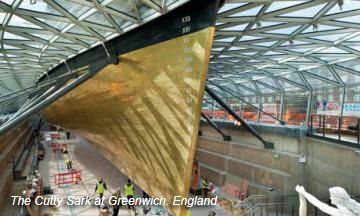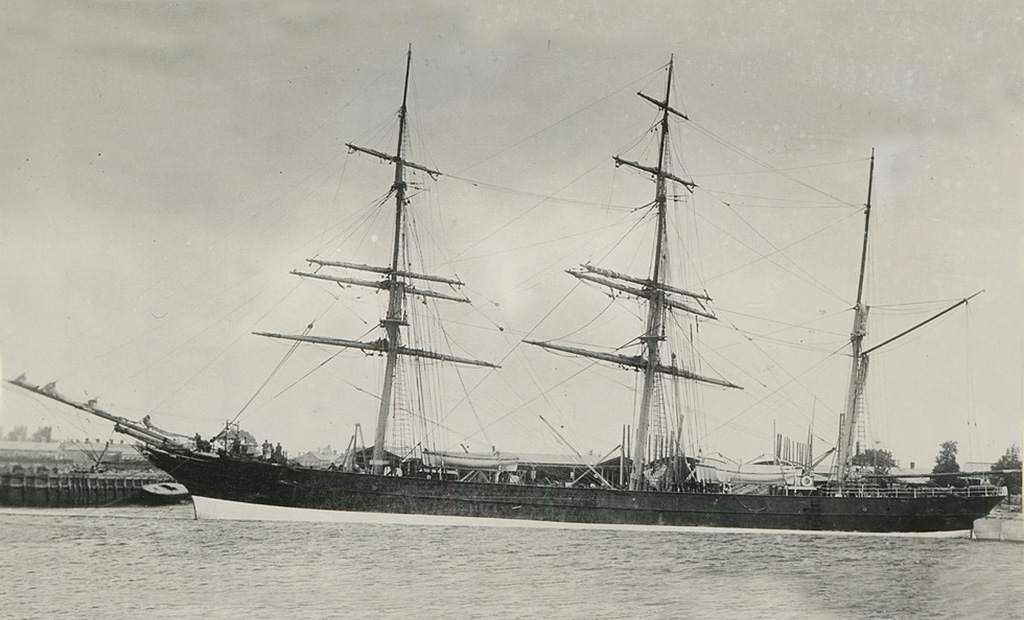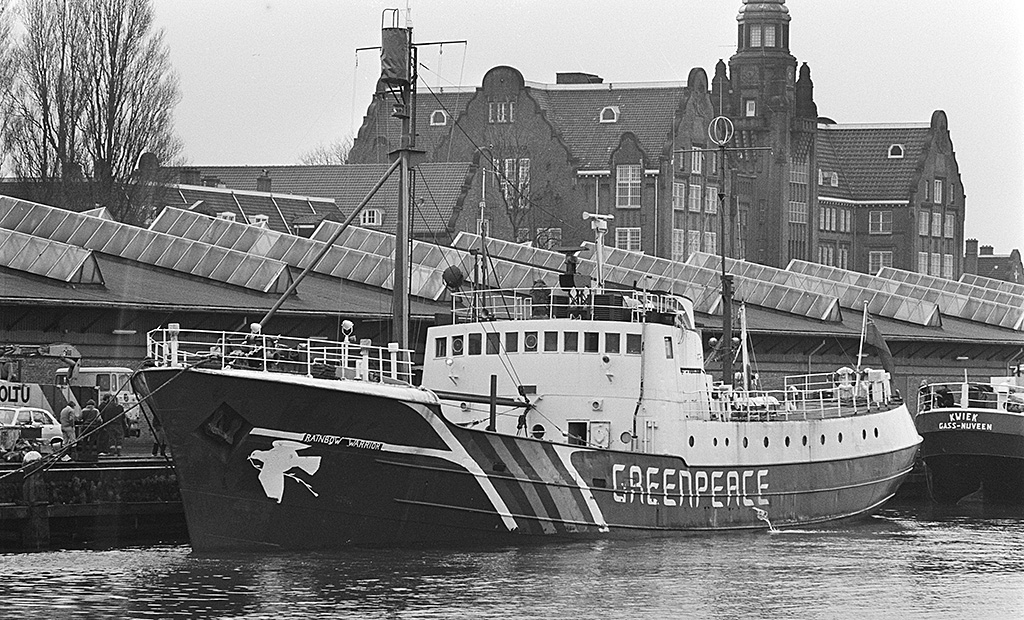MARY CELESTE
It was 9am on the morning of Friday, December 13th 1872 when a small two-masted sailing vessel entering the Bay of Gibraltar.
The ship was the 'MARY CELESTE' of New York, a Canadian built 100 ft brigantine. The registered owners were James H. Winchester Sylvester Goodwin and Benjamin Spooner Briggs. Her master, Benjamin Spooner Briggs known to be a staunch abstainer from drink and devout bible reader.
At the inquiry in Gibraltar, evidence was given that the Captain was a courageous officer who would not dessert his ship except to save his life. The second-in-command, was Albert Richardson, who was also considered to be fit to command himself.
But of the good Captain Briggs, his wife Sarah, two year old daughter Sophia Matilda, and the crew of seven, nothing was to be seen or found ever again. So begins the greatest of mysteries, or at least it might seem.
However, were it not for Dr Arthur Conan Doyle, struggling to establish himself as a writer prior to creating Sherlock Holmes, perhaps the world would not have ever known or cared. The story, like many a tale, has grown with the telling, to incorporate speculation of further mysteries, including pirates, creatures from the deep, abduction by aliens, submarines, and time travel.
Conan Doyle's short story about the 'MARIE CELESTE' (he changed the name from MARY) turned a minor puzzle into one of the most famous legends of the sea. Nevertheless we should recognise it was fiction, for which his editor paid 30 Pounds, a respectable sum in 1884.
Shipping companies and court inquiries leave behind plenty of records to be researched. The following facts are known;
The 'Mary Celeste' had sailed from New York on November 7th bound for Genoa with a cargo of 1701 barrels of American Alcohol, shipped by Meissner Ackermann & Co., value approximatly $35,000 the purpose of which was to fortify wine. The value of the freight on the alcohol was $3,400 and the ship herself $14,000. The Vessels cargo was insured in Europe, and the hull insurance was carried by American companies. The Freight was insured by the Atlantic Mutual Insurance Company of New York. (Today the only survivor of the American insurers).
She was followed on 15th November by the 'DEI GRATIA' which followed a roughly parallel course across the Atlantic carrying a cargo 1735 barrels of petroleum.
On the Afternoon of December 5th 1872 half way between the Azores and the Portuguese coast the 'DEI GRATIA' came up with a Brigantine which Captain Morehouse recognised as the 'MARY CELESTE'. He knew Captain Briggs and had dined with him before he sailed. He was puzzled to see the ship yawing, coming into the wind and then falling off, she was out of control. He knew Captain Briggs to be a good seaman.
MARY CELESTE cont.
There were no distress signals, and after watching for two hours and hailing her but getting no reply they set off in a small boat and duly boarded her. The vessel was found to be in good seaworthy condition and the general impression was that the crew had left in a great hurry. They had left behind their oil skin boots and pipes. Captain Morehouse's explanation was that they had left in panic thinking the vessel to be sinking. The chronometer and sextant were not found on board. The last entry on the ships slate showed she had made the island of St Mary in the Azores on November 25th.
It was decided to bring the derelict into Gibraltar, 600 nautical miles (1,100 km) away. Under maritime law, a salvor could expect a substantial share of the combined value of rescued vessel and cargo, the exact award depending on the degree of danger inherent in the salvaging. Morehouse divided DEI GRATIA's crew of eight between the two vessels, sending Deveau and two experienced seamen to MARY CELESTE, while he and four others remained on DEI GRATIA. Upon her arrival, MARY CELESTE was immediately impounded by the vice admiralty court, preparatory to salvage hearings. Deveau wrote to his wife that the ordeal of bringing the ship in was such that "I can hardly tell what I am made of, but I do not care so long as I got in safe. I shall be well paid for the Mary Celeste."
Foul play?
Although the evidence in Gibraltar failed to support theories of murder and conspiracy, the suspicion of foul play lingered. Insurance fraud on the part of Winchester was briefly suspected, on the grounds of newspaper reports that MARY CELESTE had been heavily over-insured. Winchester was able to refute these allegations, and no inquiry was instituted by the insurance companies that issued the policies.
Another theory of foul play suggested an attack by Riffian pirates, who were active off the coast of Morocco in the 1870s. However, pirates would have looted the ship, which had not happened.
Lifeboat?
Were the personnel transferred to the yawl? intended as a temporary safety measure. Speculation on the state of the rigging and ropes that the ship's main halliard may have been used to attach the yawl to the ship, enabling the company to return on board when danger had passed. If, however, the line had subsequently parted, MARY CELESTE would have sailed away empty leaving the yawl to founder along with its occupants. It is considered unlikely an experienced captain, would have effected a panicky abandonment of the ship when, If the MARY CELESTE had blown her timbers, she would still have been a better bet for survival than the ship's boat." If this is what happened, Briggs behaved like a fool; worse, a frightened one.
These are just two of many theories put forward over the years. There has never been a clear consensus on any one scenario. It is a mystery that has tormented countless people, including the families of the lost sailors and hundreds of others who have tried in vain to solve the riddle. An example of the old proverb that the sea never gives up its secrets.
wikipedia. Notes and References - https://en.wikipedia.org/wiki/Mary_Celeste
If you have any questions about the Maritime Archive, or if you just want to say "Hi!"
Use the form below to get in touch, and we will respond as soon as we can.
'Yellow Metal' - Ships Sheathing
Known as Muntz Metal or Yellow Metal, It is named after George Fredrick Muntz, an English metal-roller, who commercialised the alloy following his patent of 1832. It's composition is approximately 60% copper, 40% zinc with a trace of iron. Originally developed as a replacement for ships copper sheathing. It has the same anti-fouling capabilities, at two thirds of the cost.

It works by the leaching action of the copper in sea water. This kills organisms that attach themselves to the metal sheets, thus protecting the structure beneath. 'Yellow Metal' soon became the material of choice and made Muntz a fortune. He also patented bolts made of the material. Again these were cheaper and proved to be of great strength and durability. Sheets for British and American sheathing were 48 x 14 inches, designed to join midway between the edges of ships hull planking. (Planking was a standard twelve inches wide). The sheet allowed for a one inch overlap. The sheathing was adhered to the hull with a layer of pitch or tar, with a final fix by nails.
Acknowledgements: Encyclopedia Brittanica. wikipedia. Dr. E. Lee Spence.






